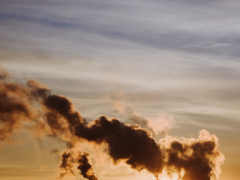China’s green potential is large; firmer policies are needed
China’s envisaged green transition would help achieve environmental goals in China and globally. However, China could sharpen its ambition and rethink some options, to achieve its targets under the Paris Climate Agreement in a cost-effective way. This is the main conclusion of the report China’s Green Transition to 2050: the worldwide context, by PBL Netherlands Environmental Assessment Agency.
China is entering a crucial period of economic transformation, largely triggered by environmental issues. Chinese advisors are formulating a policy framework to guide this vast, complex and decades-long transformation. Meanwhile, PBL has made a start with assessing the worldwide implications.
The PBL study was carried out at the request of the China Council for International Collaboration on Environment and Development.
Key findings of the PBL study are:
The currently envisaged policies for China’s Green Transition are insufficient
to place China on a path that is consistent with achieving the internationally agreed target of limiting global average temperature increase to 2 °C above pre-industrial levels. Additional, targeted policies are needed and doable, according to our modelling.
In terms of land resources – soil, water, biodiversity – the worldwide context of China’s Green Transition looks problematic
Pressures on land resources will allegedly become larger than anytime in human history. This will be so in many regions of the world, such as in neighbouring South Asia. Meanwhile, total demand for agricultural land in China itself is projected to remain stable, but only under the conditions of the global baseline scenario. Therefore, China’s envisaged retreat from overly high-input agricultural practices should be balanced and careful.
Clean coal-fired and synthetic natural-gas-fired power generation should be seen as transient technologies, forming only a bridge from old to new, during China’s transition, but having no place in it once the transition is completed
China is in a unique position to simultaneously address its air quality issues and greenhouse gas emissions. This is in contrast to the situation in OECD countries, who typically had to address these issues in two consecutive steps, decades apart. A firm strategy and budget are required, to avoid the ‘clean coal’ interim tool locking China into a path of continued coal use at a time when this will be incompatible with agreed international goals.
PBL conducted model-based scenario analyses based on the recently developed Shared Socio-Economic Pathways. Economic projections were compared with those of the Development Research Centre of the State Council of China. PBL’s results are in terms of world regions, including the China region. The PBL study is the result of a preliminary project, rather than a full assessment. It was carried out in collaboration with Utrecht University and with the financial support of the Ministry of Infrastructure and Water Management.




